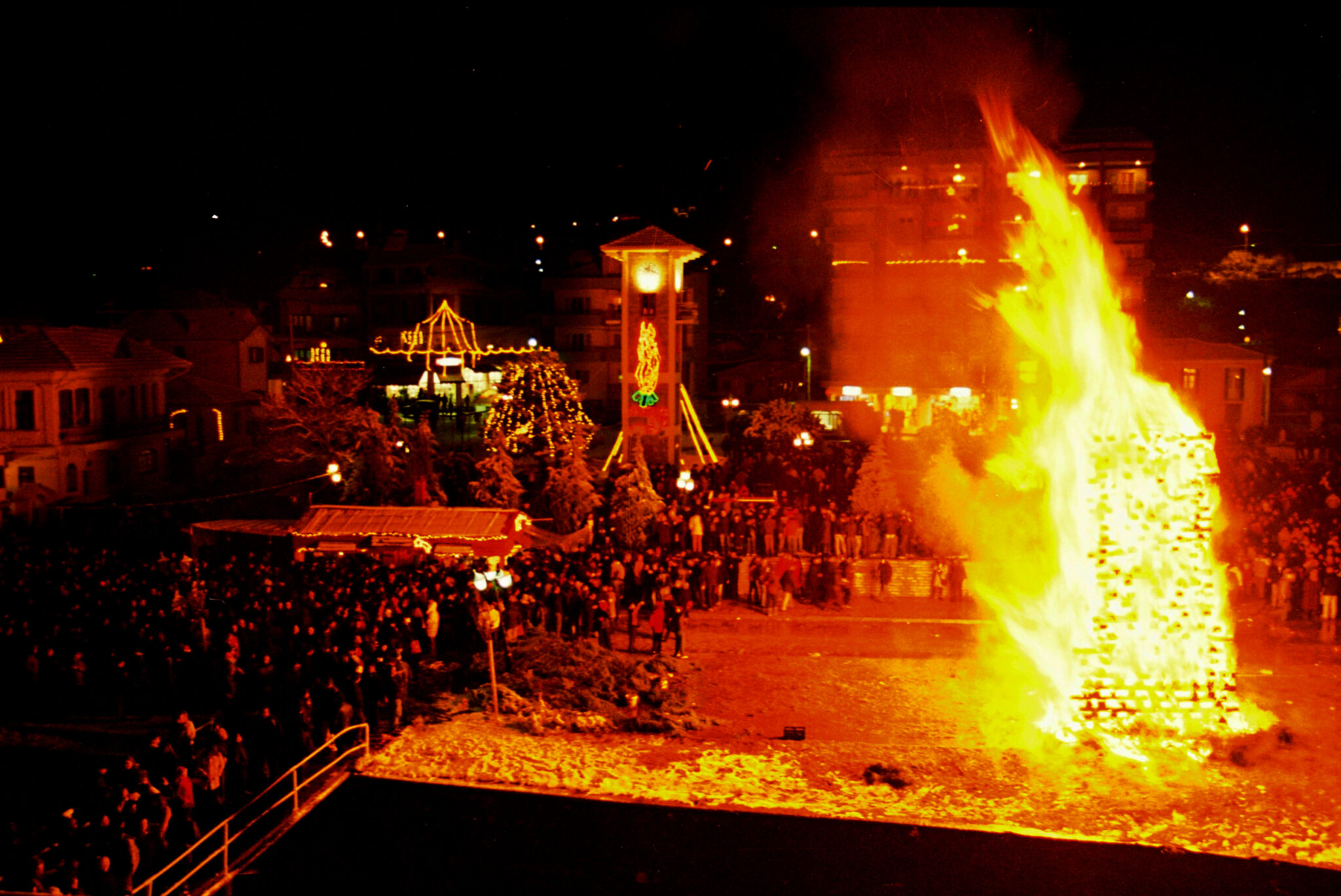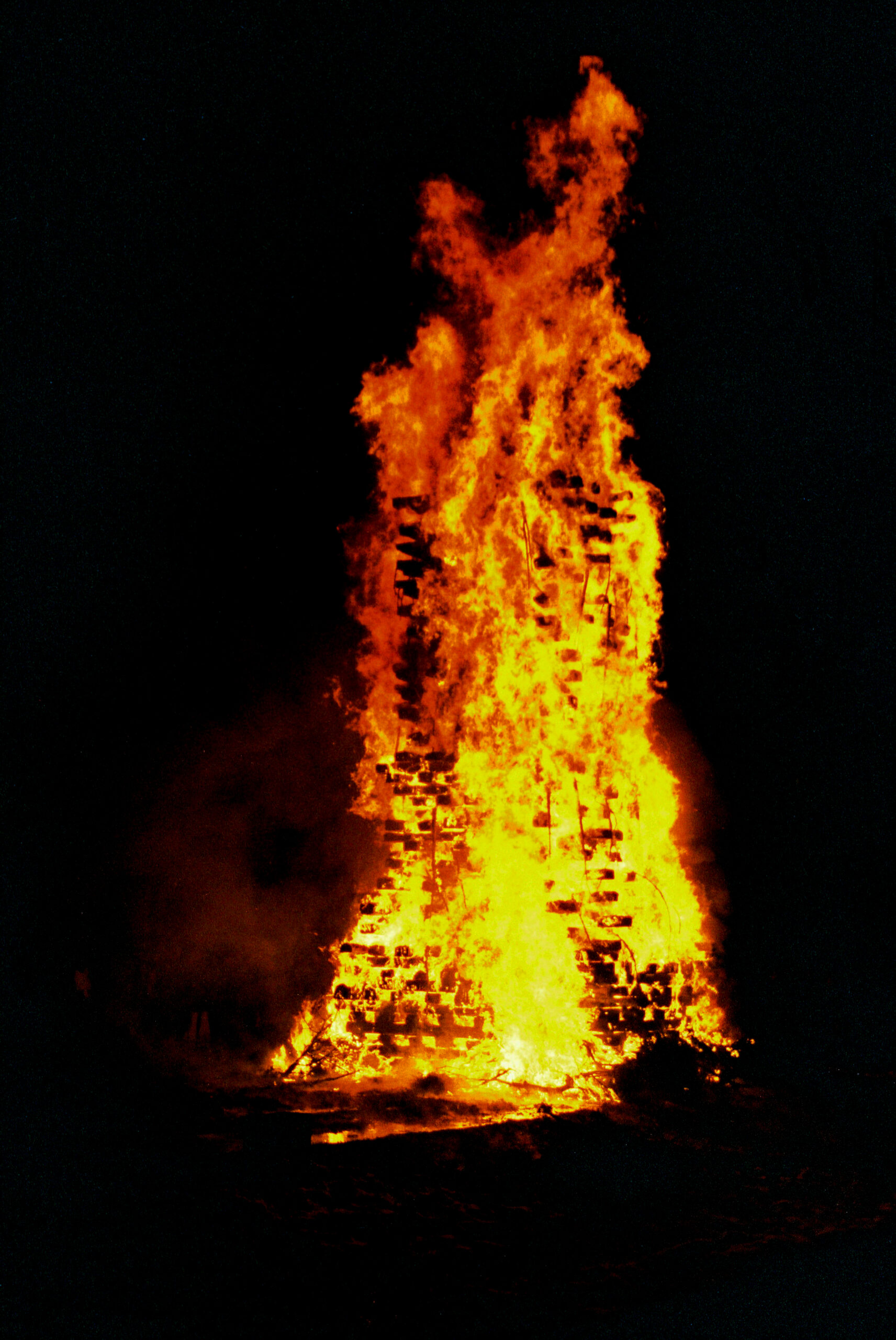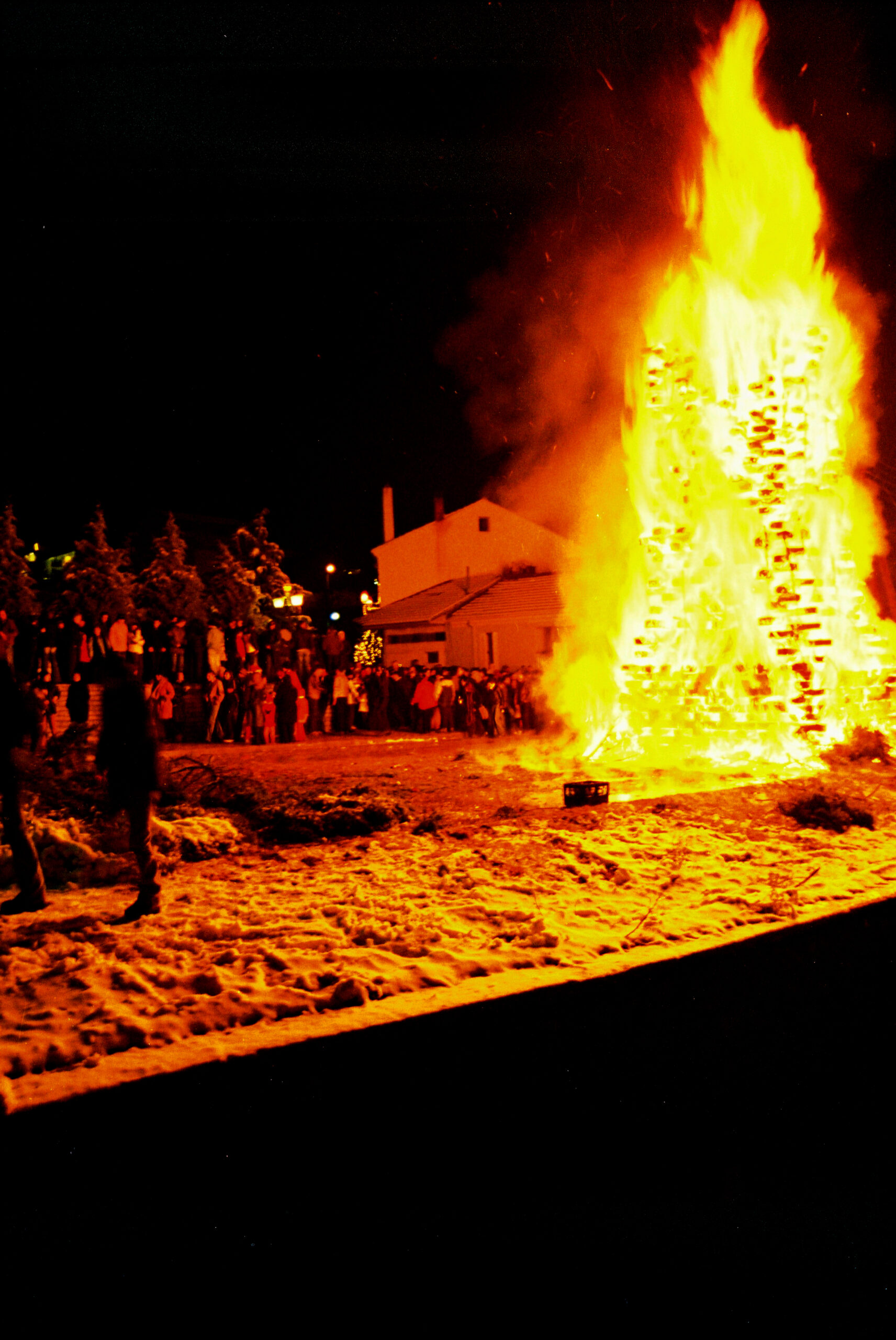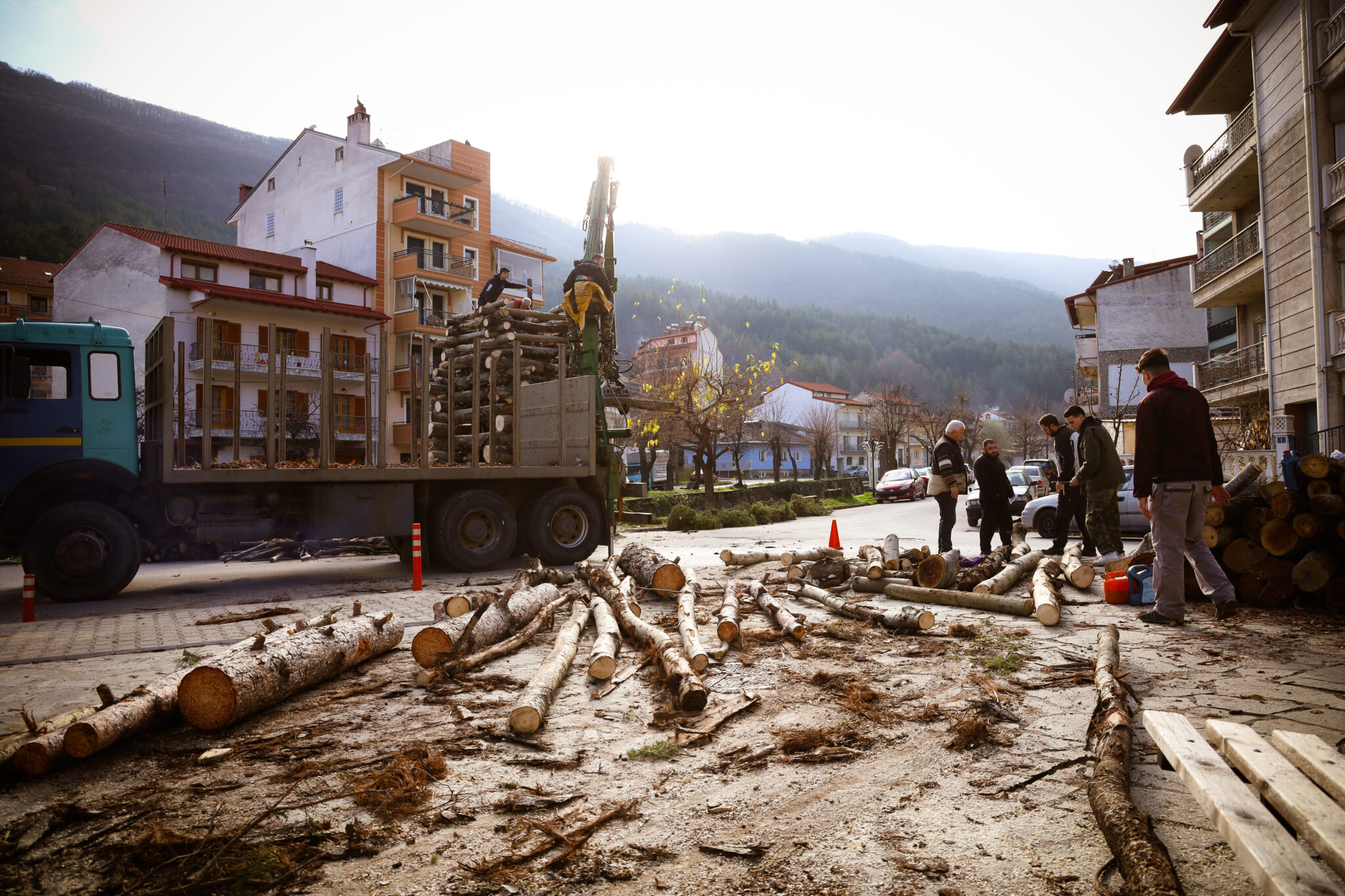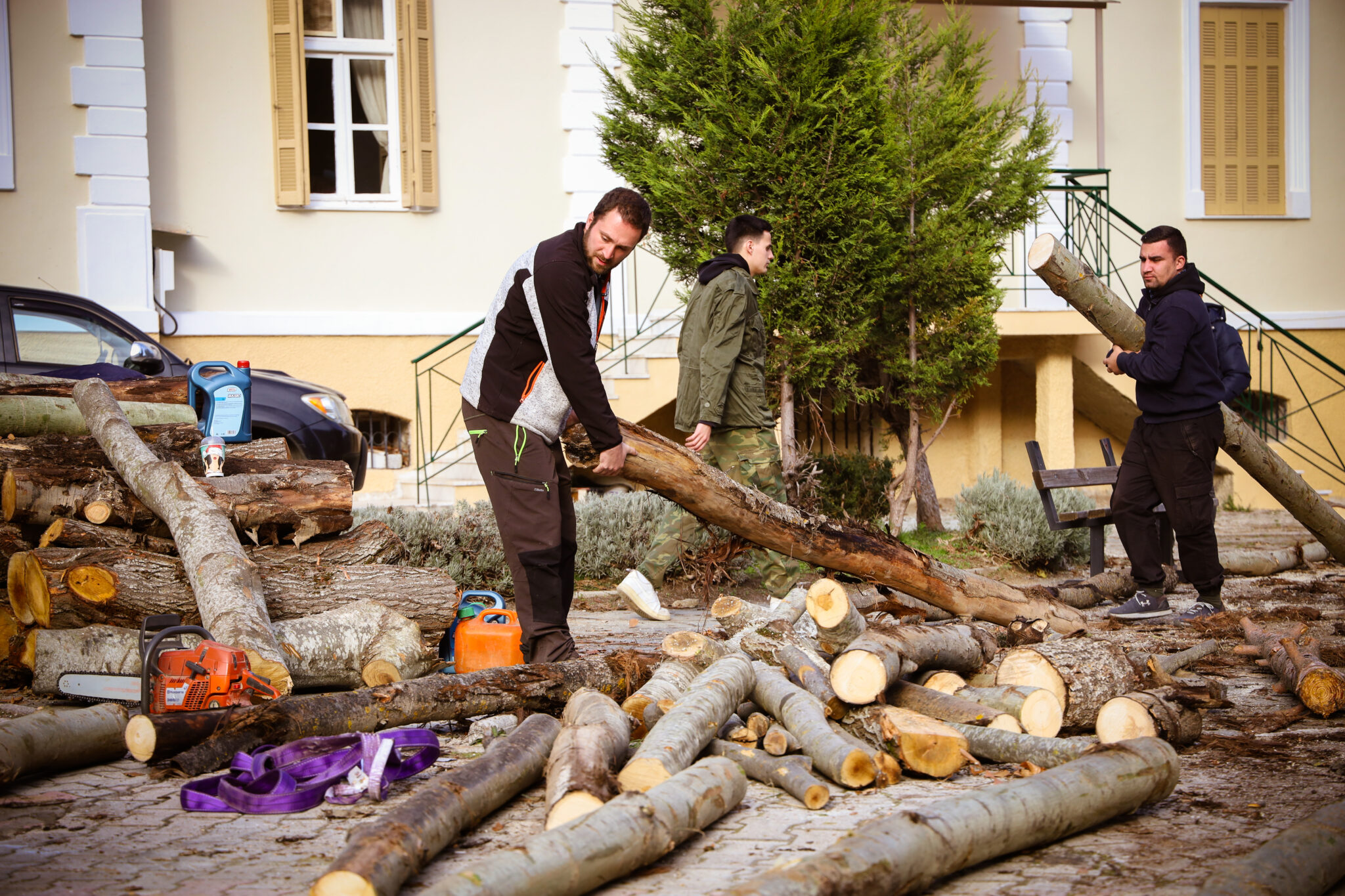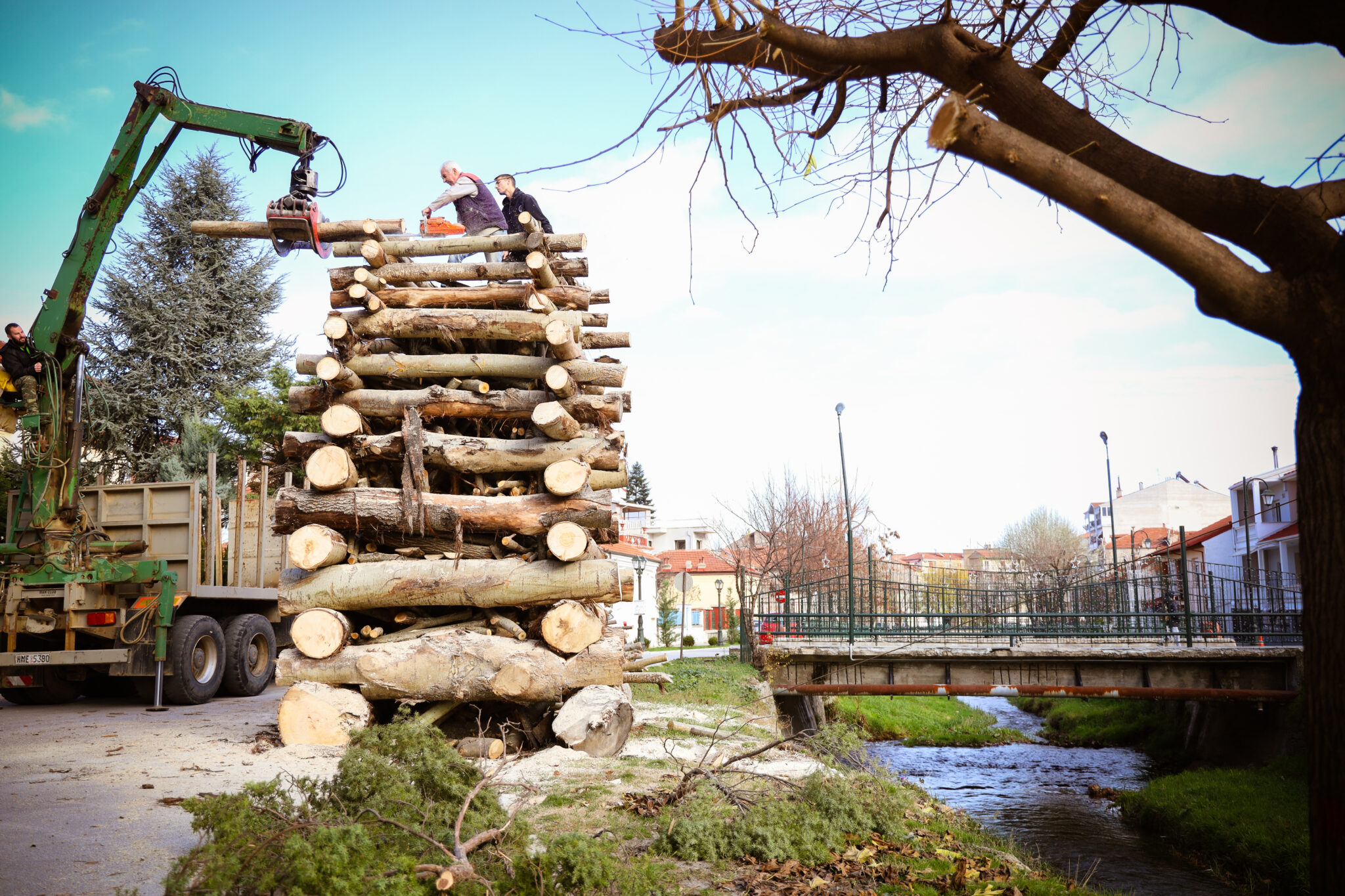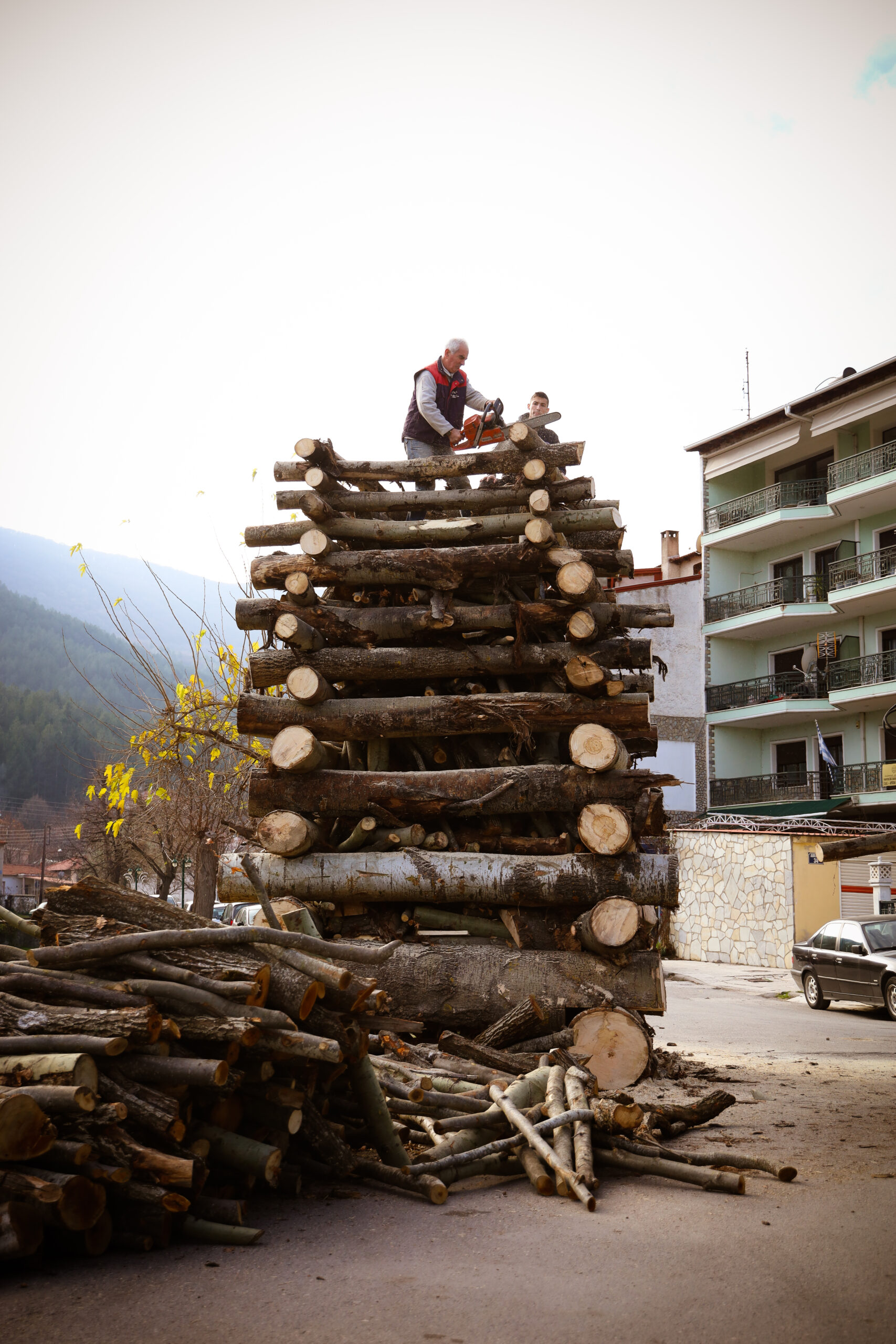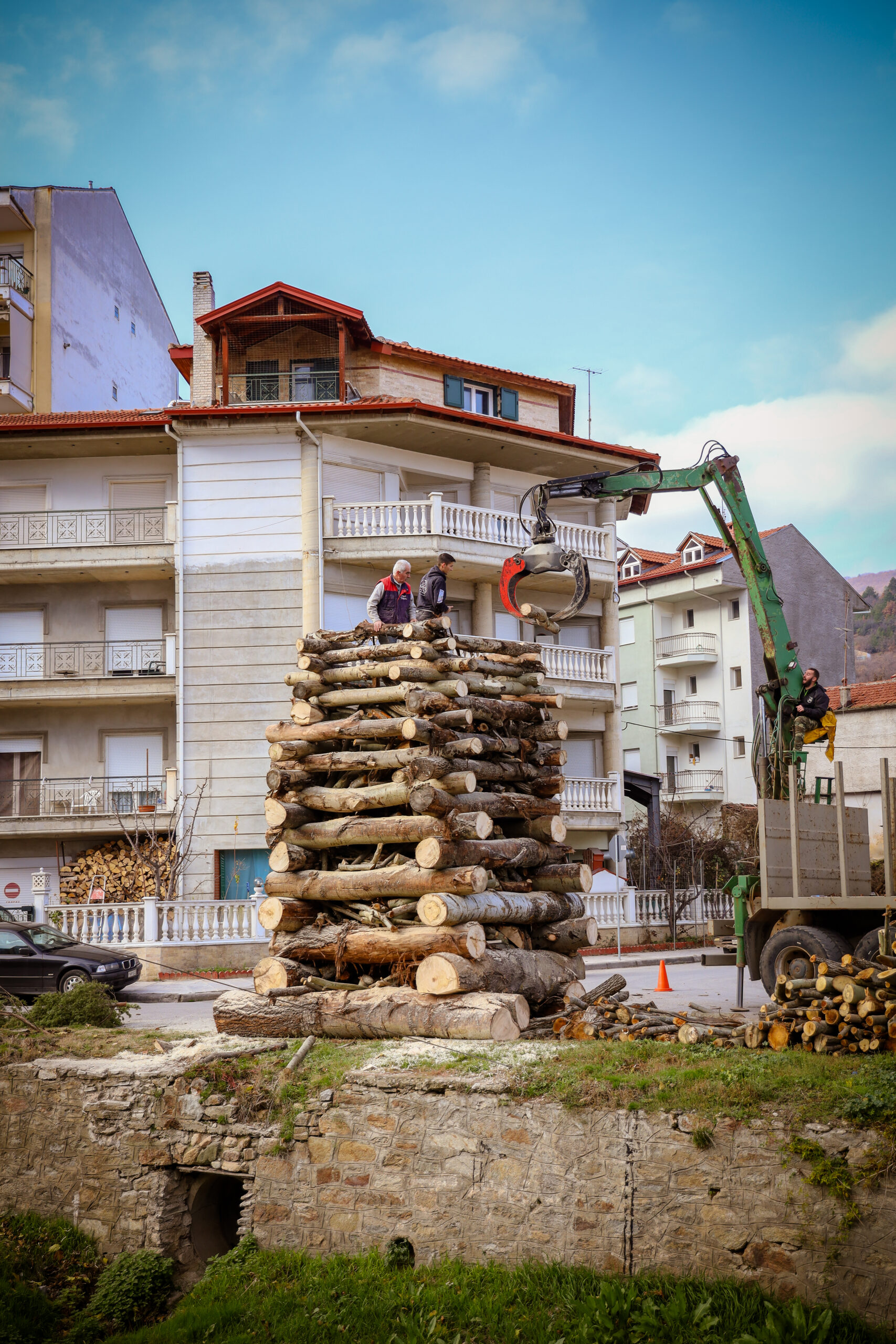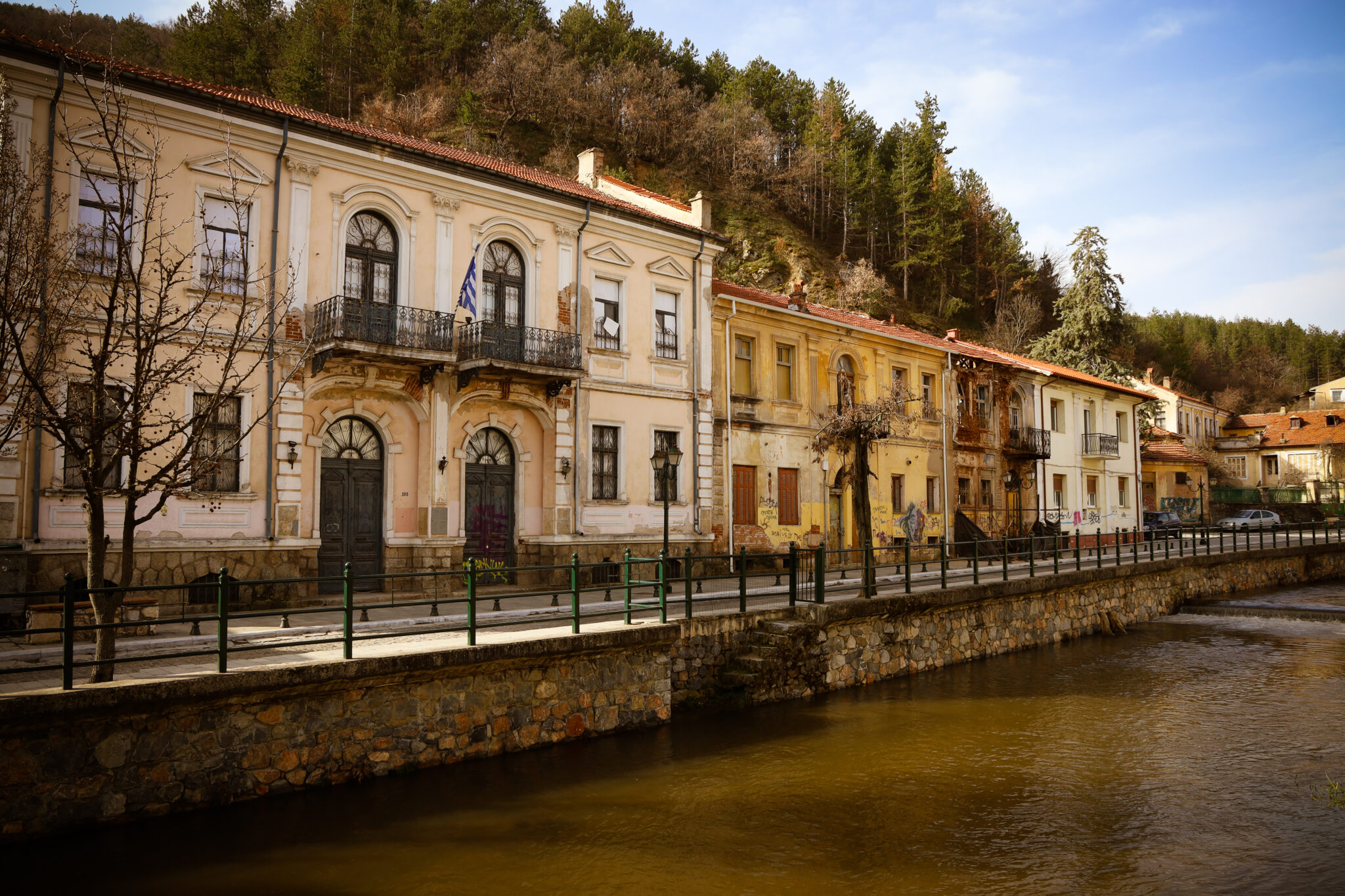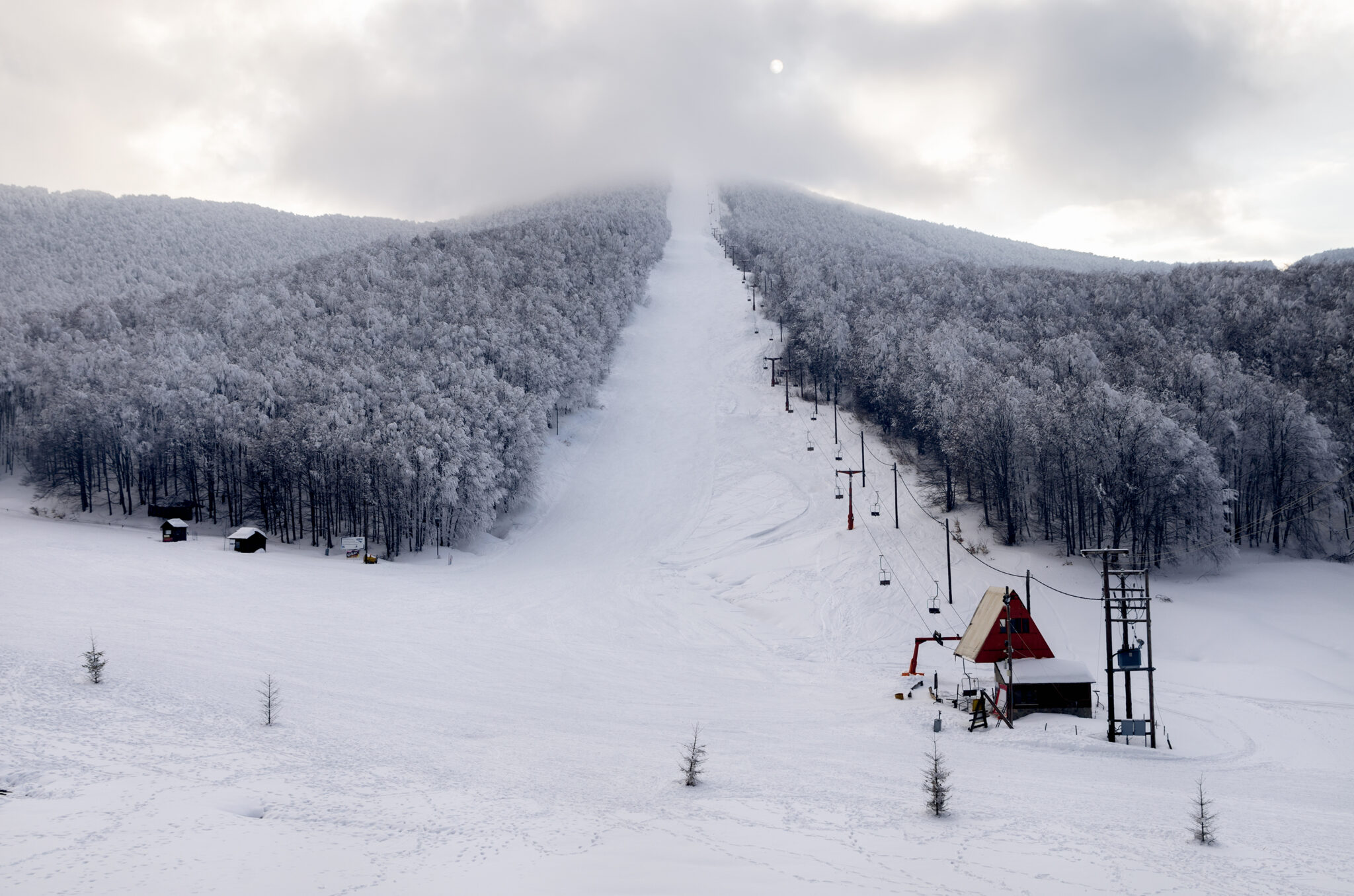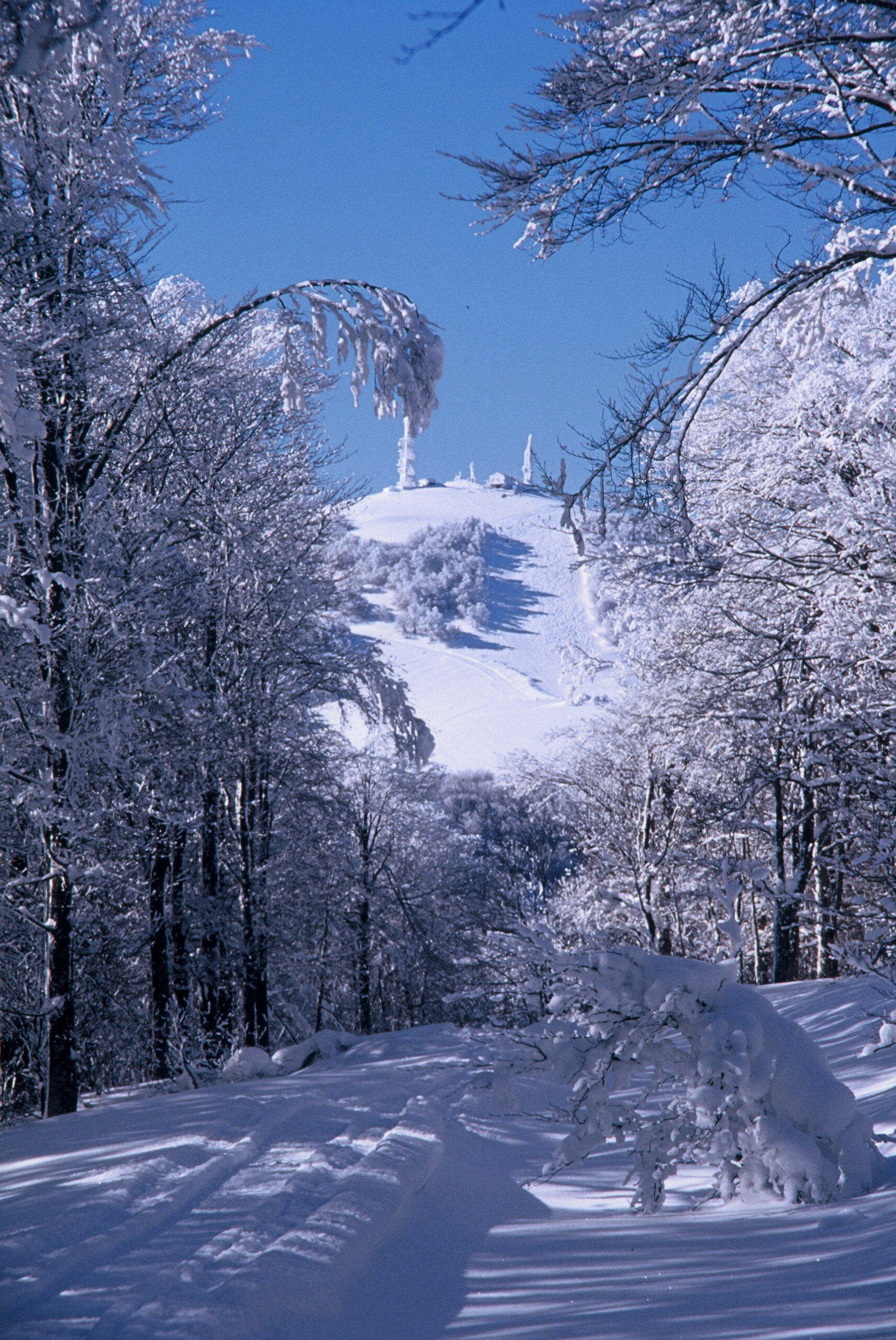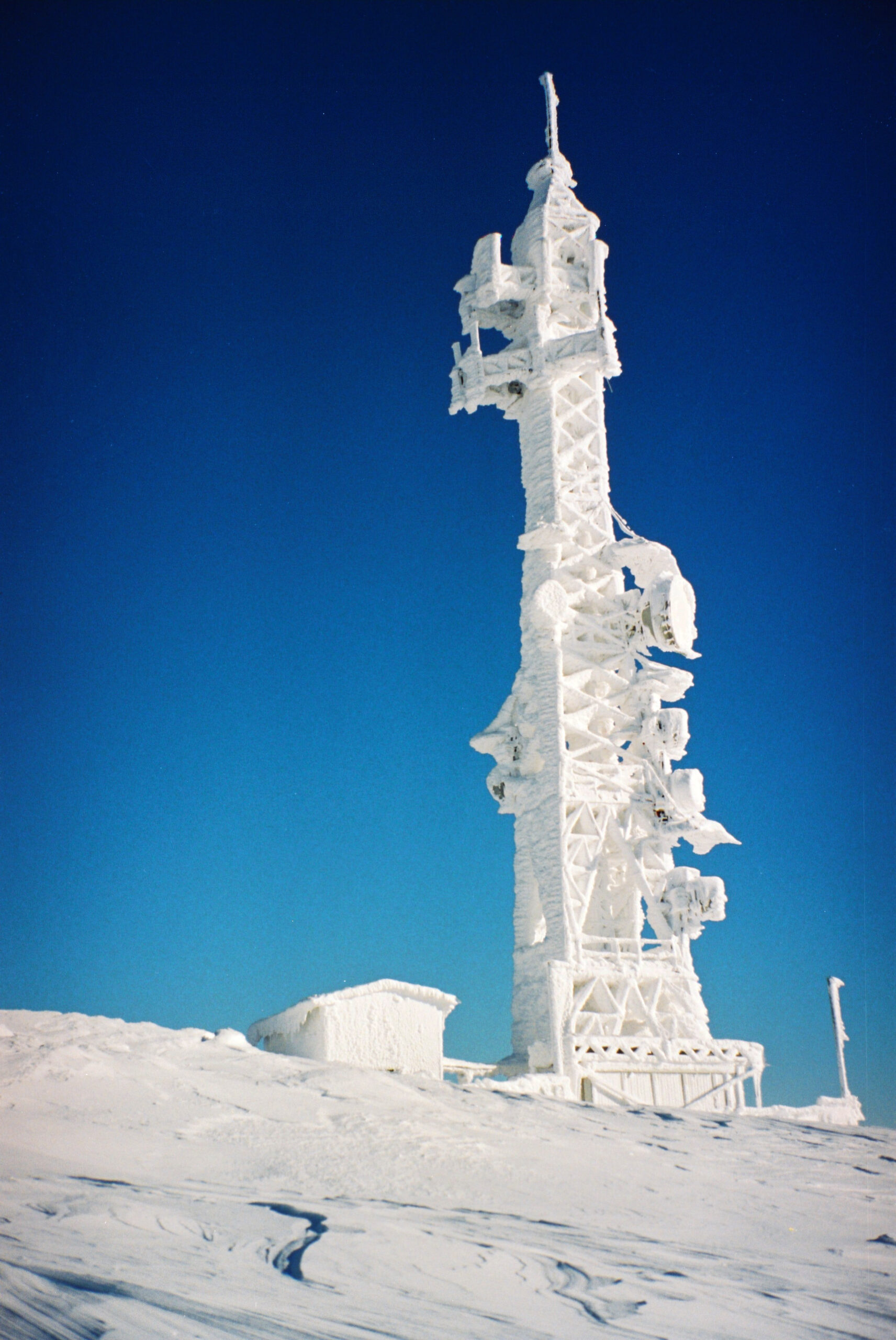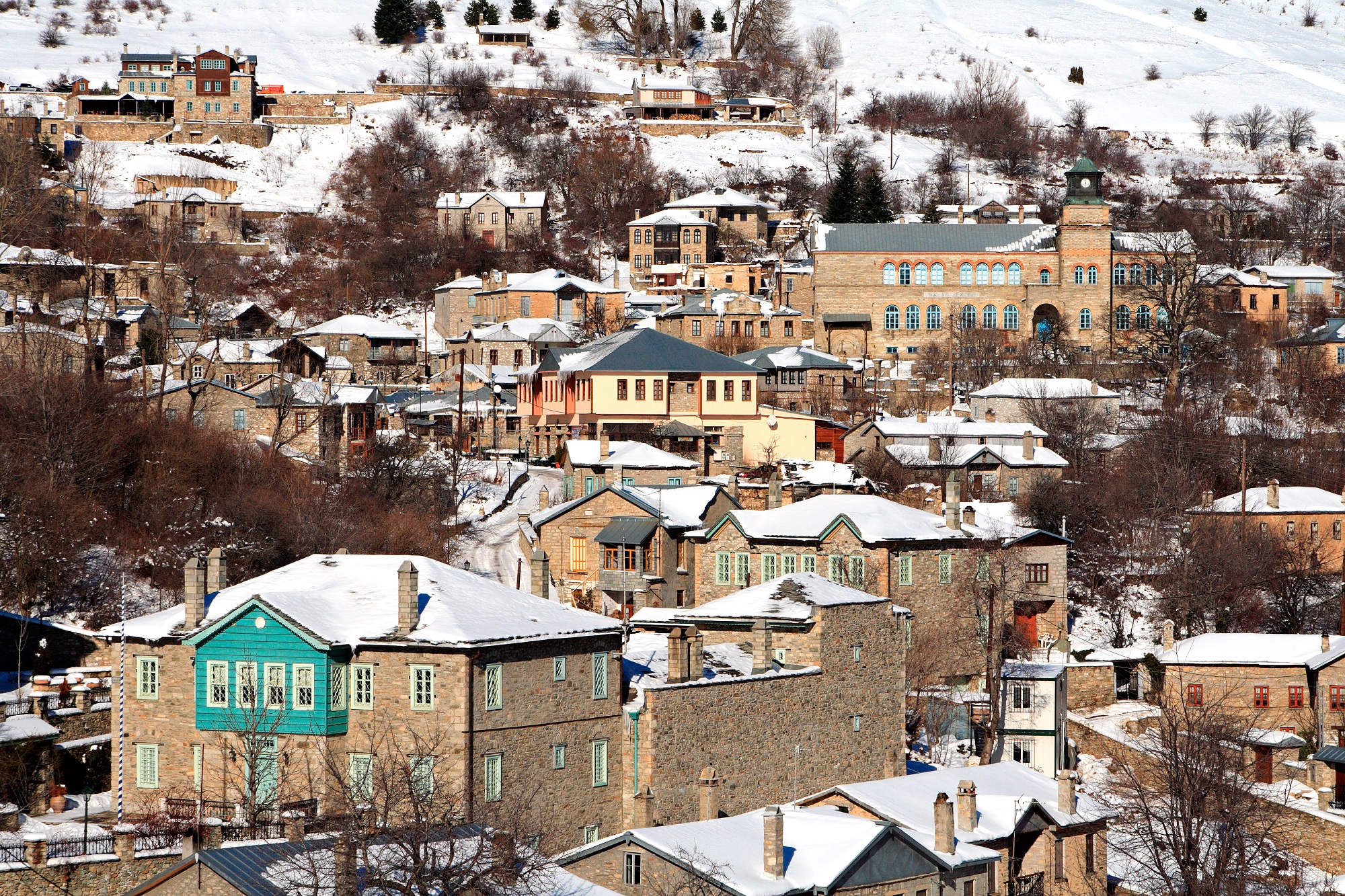This year again, at midnight on Friday, December 23, respecting the traditional custom, the neighborhoods and surrounding villages of Florina will be lit up by huge fires. Locals and visitors alike engage in an old ritual that includes feasting, singing, dancing and bucket loads of fun, until the early hours of Christmas Eve.
The “Fires” of Florina, whose roots stretch back centuries, are the most popular Christmas tradition in western Macedonia, attracting visitors from all over, every year. The spectacle gets even better if the temperature falls below zero or the city and its environs are cloaked in white.
As the custom dictates, the neighbourhoods of the city and villages of the region engage in a competition to see who can build the biggest fire. Emboldening the bonfire builders are local brass bands playing their lively brand of Balkan music. People dance, drink their local red wine or tsipouro (grape distilate) and munch on delicious delicacies. ‘Fasolada’ a hot bean soup cooked up large cauldrons, warms and fuels the revelers.
With roots in antiquity
This is a pagan custom, which has survived through the ages and is still an integral part of a local tradition that binds communities together. Researchers and folklorists trace it back to ancient festivals and rituals dedicated to fertility and fruitfulness, and it is not by chance that these celebrations coincide with the winter solstice (21 December), when, after the longest night of the year, people await the rebirth of nature.
With the introduction of Christianity, the custom adapted and the metaphor changed to symbolise the fires that shepherds lit for the newborn Jesus, a proclamation of his birth. Maybe this is why now this festival happens over December 23rd to 24th, Christmas Eve.
The number of fires in the city exceeds 30. The largest is the one in Heroes’ Square, next to the Sakuleva River that runs through the city. Reflecting the leaping flames, the waters of the river turn red.
Everyone in their neighborhood and village gather around the fire and welcomes the birth of the Son of God. First the young children singing carols. As the piles of wood build up and the flames flare up, often reaching up to 15 meters and as the fires grow so do the revelries and the celebration last until the morning. At first light, the women of the villages shovel smoldering coals into buckets which they take home to light the stove/fireplace of the house, as sign of good luck for the new year.
The preparation in the old days
The preparation, gathering of suitable timber, took months in the past. Groups of youngsters would go up the mountain to collect tons of wood, which they would store somewhere dry until the eve of the festival. Then the wood would be piled high ready to be lit, igniting the nights festivities.
The late historical folklorist of Florina, Lazaros Mellios, describes the preparation in the old days in his book “Kalanta and fires in Florina” -1995): “Once the preparation started, months before. All the youngsters would divide up into groups according to their neighbourhood or village and head to the mountain to collect wood, mostly cedars, which crackles loudly when burning and is believed to ward off evil spirits. They would also get timber from the houses by shouting out to the people inside: “wood for Kalanta”. The goal was to gather the most wood and to have the biggest fire in the neighborhood. Tradition dictated that some of the wood had to be stolen, so they would plunder some from the yards of other houses at night and the occupants, more often than not, would give chase. Of course, what was of particular value was looting the firewood from the other groups. So every night, someone from the group would be on watch and guard the wood.”
Florina as a film set
Florina is a city that looks like a film set, especially around the Sakuleva river that courses through the it. It is no coincidence that the late film director Theodoros Angelopoulos (winner of the Palm D’Or 1998) “showcased” the city, its cobbled streets and old mansions on banks of the river, many times in his works.
The city has an abundance of painters and sculptors, both amateur and professional, who, together with the students of the Department of Visual and Applied Arts, give a unique colour to the place. The region of Florina is famous for its stunning landscapes. Nearby is the Prespa National Park with the twin lakes Mikri and Megali Prespa, Byzantine churches and a landscape full of rare flora and fauna. Rivers, some of which are dammed creating rich ecosystems, and towering mountains are waiting to be explored. The ski resort of Vigla – Pisoderi will reward even the most demanding traveller.
Visit Amyndeio, with its numerous vineyards, the rural villages of Nymphaeon, Agios Achilleios, Akritas, etc. The archaeological sites of Petra and the hill of Agios Panteleimon in Florina bear witness to the long history of human activity in the region. Stay at one of the lovely hotels in the city of Florina or a picturesque guesthouses in the surrounding area. Taste the famous Florina kebabs, a classic local dish made with chili and onion, as well as the famed red Florina peppers stuffed with myzithra cheese, baked beans from Prespa and of course the local “Florinella“, a ewe’s and goat’s milk cheese, grilled on charcoal.
Getting here
Florina is 626 km (6 hours 25 minutes) from Athens and 193 km (2 hours 11 minutes) from Thessaloniki. In the city you will find hotels and restaurants that meet most requirements and tastes. Nearest airports are Kastoria (77 km) and Kozani (87 km).
Read also:
Floating History: The Boats of Kastoria, Northwestern Greece
5 Best Places in Florina to Eat the Local Fare
In the Purple Crocus-Scented Fields of Kozani, Northern Greece



